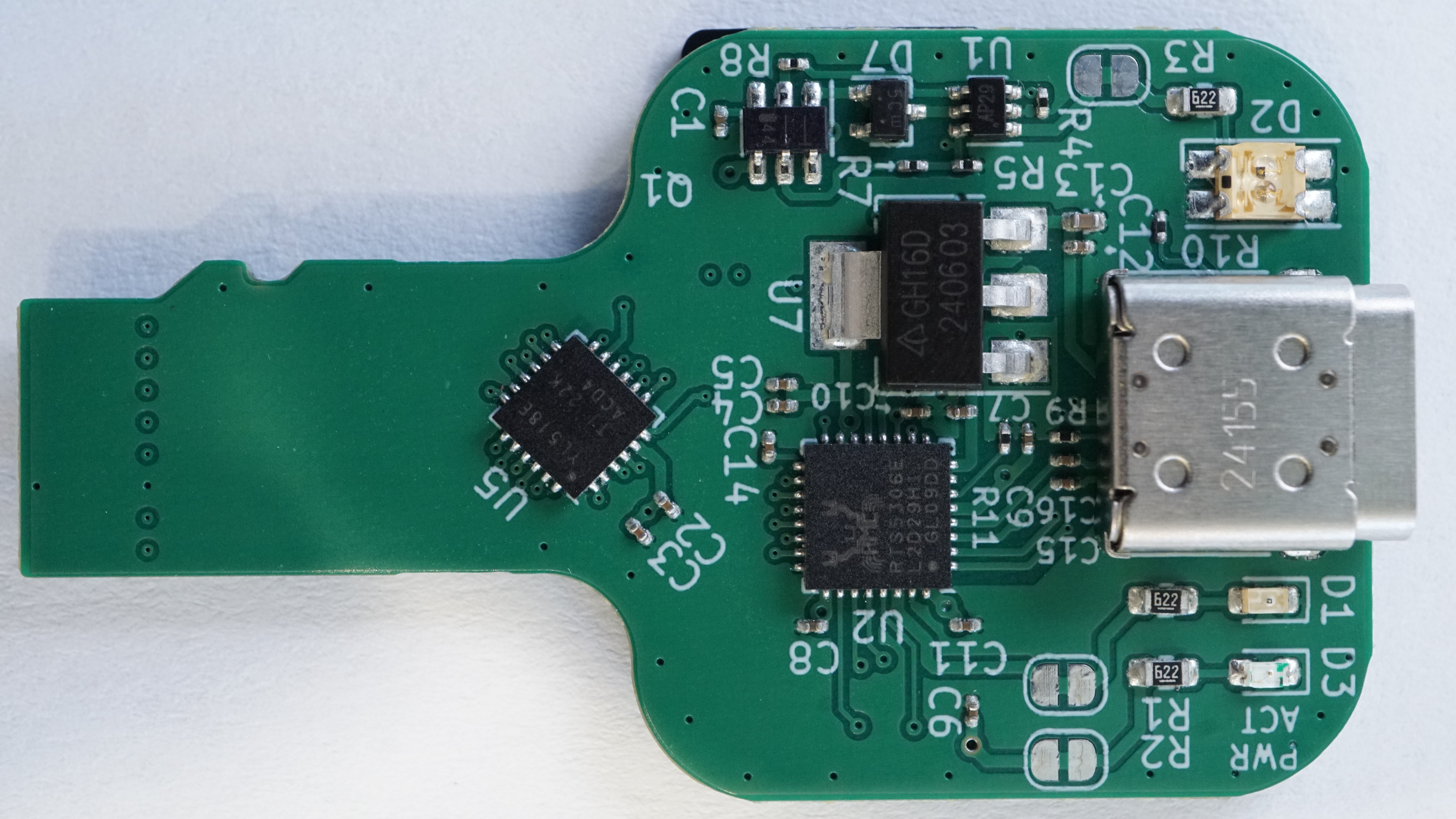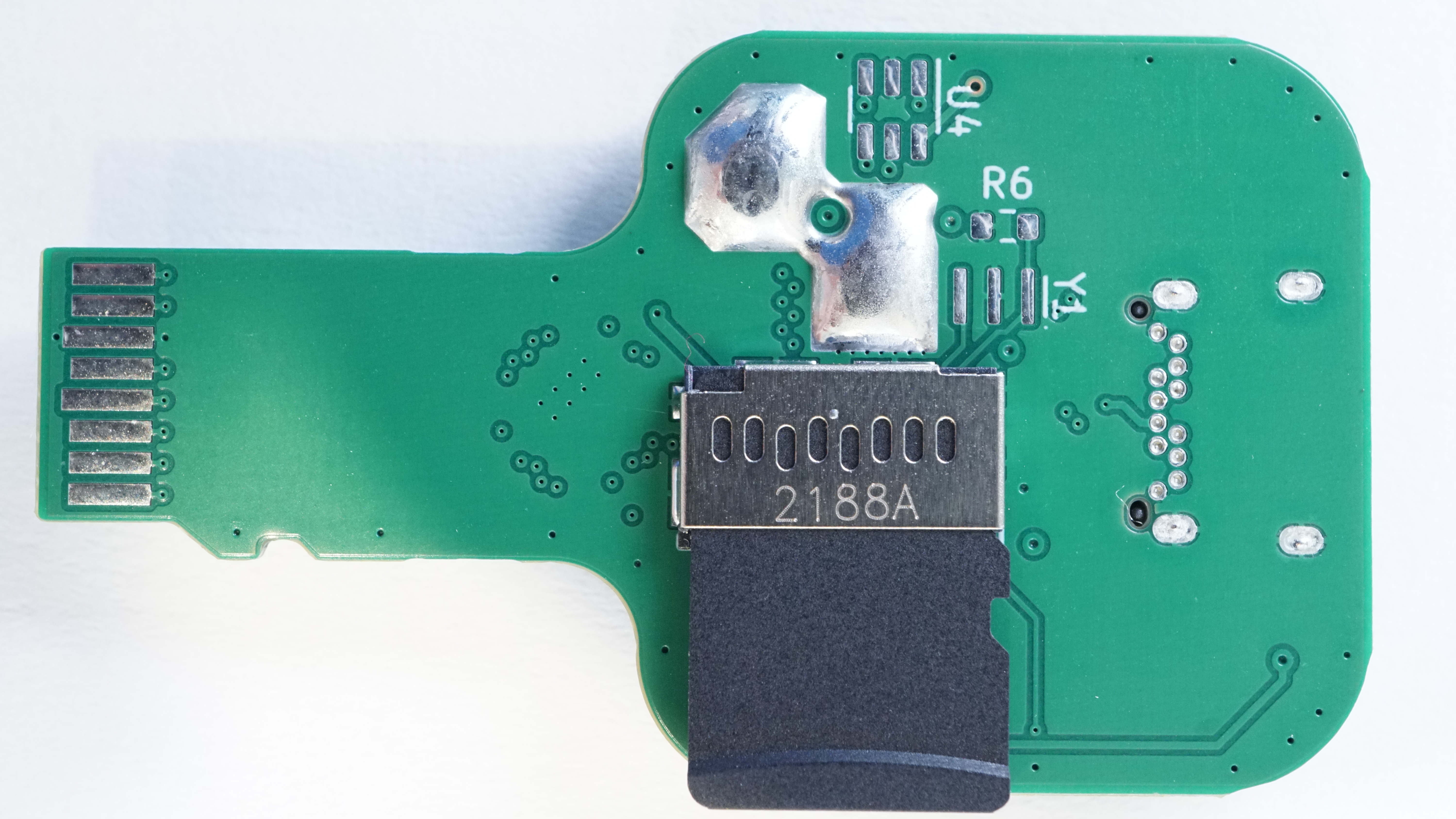SD_Swap allows reflashing of an SD card connected to the DUT (Device Under Test), without physical contact with the device. The board is designed in such way that it fits into micro SD card slots. Thanks to this, there is no need for special cables with a micro SD adapter, though it may be beneficial to add an extention to avoid accidentally breaking your boards SD connector if someone yanks the cable.
This project was inspired by the SDWire project. The major improvements are:
- USB-C
- USB3.0 read/write speeds
- Simplified design/control
- Solder jumpers to disconnect LEDs
- Dim LEDs so you wont get blinded
I have got SD write speeds up to 65MiB/s so 520Mbit/s
IMPORTANT
Faster SD cards may not work on some single board computers as the timing and capacitance on the SBC side is not right.
After seeing the SDWire project I was disappointed by the complexity as well as the lack of USB3. So this project is uses the REALTEK RTS5306E controller which many USB3 to SD adapters use. The chip has power suspend functionality which we can use as a GPIO for switching hosts. The suspend option will shut off the SD cards power but not the controllers; it also has build-in RW protection as to finish writes before switching to the SBC
The SDWire project uses a USB to GPIO chip for this, but they have two power controlled USB ports on the board as well as the above mentioned method.
To swap the SD card between the host PC and the SBC you run
sdswap 0 or sdswap 1.
1 is the host PC while 0 is the SBC. You can also chose which device to use if you have multiple attached. To do this run sdswap 1 to print the found devices and type sdswap 1-4 1 or another USB number. I have future plans to write this script for Windows and OSX.
$ sdswap -h
To switch the SD card to USB run:
sdswap 1
To switch the SD card to SBC run:
sdswap 0
To print the block dev run:
sdswap p
If you have multiple devices run either of the above.
Then run with the last param the same as above:
sdswap $(Your USB number) 0
NOTE:
When printing the block device the script waits until the device exists
Examples:
# sdswap 0
Uisng device /sys/bus/usb/devices/3-4
# sdswap 0
Uisng device /sys/bus/usb/devices/3-4
Already off.
# sdswap p
/dev/sda
# sdswap 0
Multiple devices found! Pass a usb number as param 1...
Usb num: 3-4
Usb num: 3-1
# sdswap 3-1 0
Uisng device /sys/bus/usb/devices/3-1
To manually controll the port use:
export YOUR_USB_NUM="1-4" #hub1 port4
echo 0 | sudo tee /sys/bus/usb/devices/${YOUR_USB_NUM}/power/autosuspend_delay_ms
echo auto | sudo tee /sys/bus/usb/devices/${YOUR_USB_NUM}/power/control
echo SBC
echo ${YOUR_USB_NUM} | sudo tee /sys/bus/usb/drivers/usb/unbind
echo PC
echo ${YOUR_USB_NUM} | sudo tee /sys/bus/usb/drivers/usb/bind
- D2 is the red/blue status LED it will be blue when the in passthrough mode, and red when the USB3 controller is reading/writing to it.
- D1 is the yellow activity LED and blinks when the USB3 controller is reading/writing.
- D3 is the red power LED and is active when the USB3 controller has power.
NOTE: The red power LED will not be on if the USB cable isn't 5V providing power.
- Fix SBC side timeing
- Write script for Windows and OSX.
- Edit pick n' place csv
- Label stat leds
- Add use switching regulator
- Add E-Fuse
- Update readme

